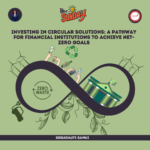By- Nayan Saraf
In December 2015, RBI introduced the guidelines in computing interest rate based on marginal cost of funds called Marginal Cost of Funds based Lending Rate (MCLR), to replace the base rate for bank lending, from 1st April, 2016.
Previously, the bank loan rate was calculated as base rate + spread. The base rate is based on average cost of fund which is the interest given on deposits, negative cash carry on account of CRR (as RBI don’t give any interest on it), operation cost, and minimum hurdle rate, and the spread represents the riskiness of the borrower. Hence, if the base rate is 9.20 and the riskiness of the borrower is 0.30, then the bank loan rate would be 9.20+0.30= 9.50%.
What’s the problem with the base rate?
More often than not, the commercial banks are reluctant to pass on the benefit of lower interest rate to their customers whenever RBI reduces Repo Rate. Hence, in the case of Repo rate cut, the cost of funds i.e. the cost of fresh borrowing goes down for banks as they usually reduce the interest rate on deposits, but they do not reduce their lending rate. This leads to asymmetry and lag in monetary transmission.
How will MCLR overcome the problem in the base rate?
Under MCLR, banks need to calculate the marginal cost of fresh borrowing. MCLR is reviewed every month that ensures that banks pass on the benefits of lower rate immediately. The rationale behind this methodology is quite simple: If banks can borrow at lower rate, they should lend at lower rate.
Policy Implication:
The immediate policy implication would be reduced EMI on home loans and term loans. But banks have already found a way to cheat MCLR, for example, by increasing the spread to maintain the rate at the existing level. Also, MCLR is a double edge sword, in the case of increased cost of fund, MCLR would also be higher, and so would the EMIs.














Leave a comment